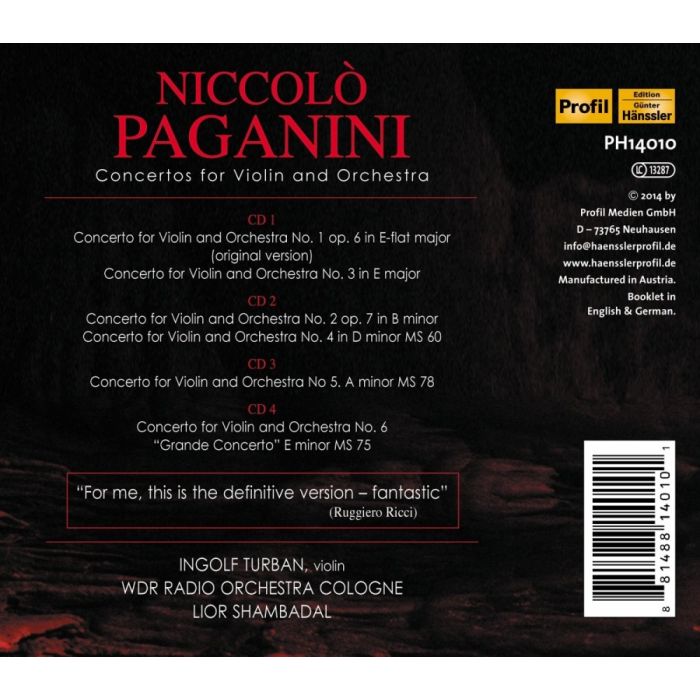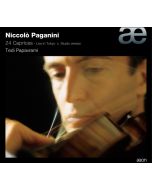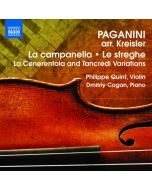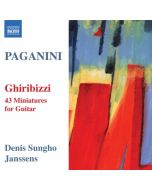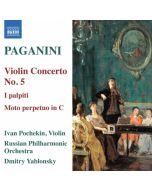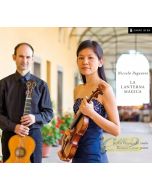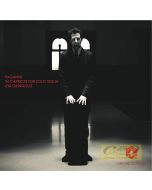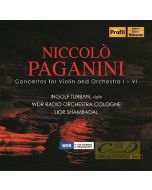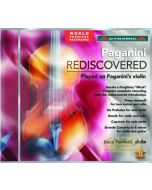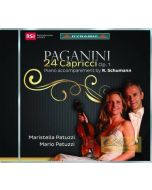
(Produkt nie został jeszcze oceniony)
kompozytor
Paganini, Niccolo
tytuł
Paganini: Concertos for Violin and Orchestra I - VI
wykonawcy
Shambadal, Lior, Turban, Ingolf, WDR Funkhausorchester Köln
nr katalogowy
PH 14010
opis
Paganini's Concerto for Violin and Orchestra No. 1 is a virtuosic tour de force and reveals not only Paganini's incredible technical ability, but also his melodic sensitivity and skillful exploitation of dramatic structure. Like many of his other works, this concerto takes inspiration from the musical language of Gioachino Rossini's operas, which were extremely popular at the time. Paganini originally composed the Concerto No. 1 in the unusual key of E flat major, in order to achieve a more brilliant tone for the violin. However, since modern concert pitches are much higher than was the norm in Paganini's era, the standard modern version of the piece is transposed to the key of D major, which also makes the very thin E string of the violin less susceptible to breakage (Paganini often broke several strings during a single concert performance). By modern standards the technical demands of the concerto are only moderate, but in Paganini's time they were considered tremendous, and many contemporaries branded the piece "unplayable." This, of course, served as valuable publicity that helped Paganini become the most popular soloist of his day. The work is indeed a catalog of such flashy techniques as extended arpeggios, left-hand pizzicati, rapid runs in thirds, fifths, and even harmonics. The work is more than a mere virtuoso showpiece, however. Paganini's concerto is filled with elegant melodic themes, and there are moments of striking beauty. One legend holds that Paganini composed the main theme of the second movement on a one-string violin while languishing in prison under suspicion of a murder he did not commit. Such legends grow up naturally around the dynamic (and, some said, demonic) Paganini, but they also reflect the appeal and mystique of his music. Paganini's aura of mystery was amplified by his refusal to allow his works to be published during his lifetime, making it impossible for his rivals to study and master his techniques. The Concerto No. 1 was published only after his death, and it soon became a fixture in the repertoire of lesser virtuosos who were as adept, more or less, in the technical department, but not nearly as musically compeling as Paganini. Fortunately, many great twentieth century soloists have concentrated on the musicality of the piece as much as the virtuosity.
nośnik
CD x 4
wydawca
Profil Medien
data wydania
3.06.2014
EAN / kod kreskowy
881488140101
119,00 zł
Produkt na zamówienie
Wysyłka ustalana indywidualnie.
Darmowa wysyłka dla zamówień powyżej 300 zł!
Darmowy kurier dla zamówień powyżej 500 zł!
sprawdź koszty wysyłki